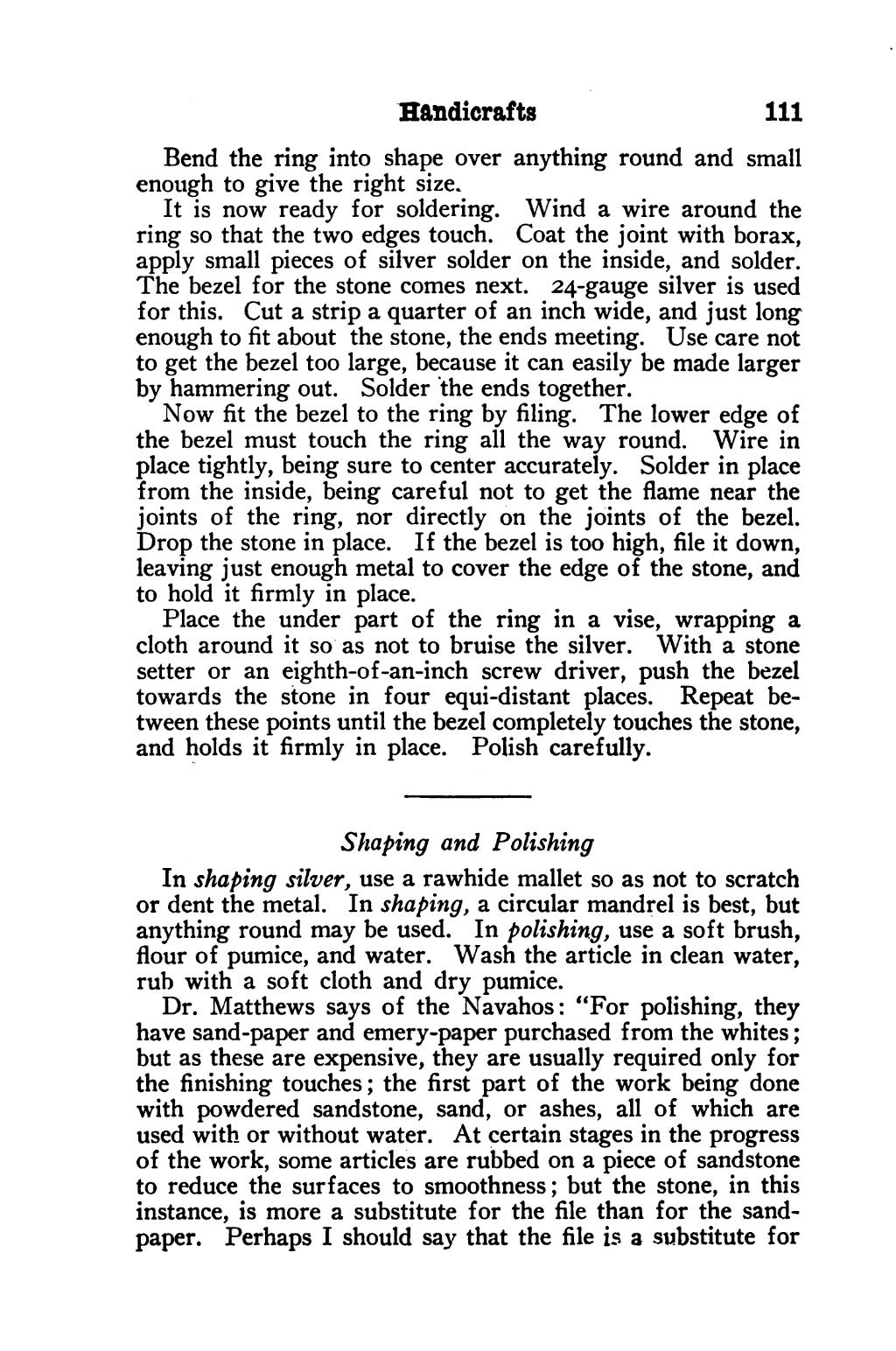Handicrafts | 111 Bend the ring into shape over anything round and small enough to give the right size. It is now ready for soldering. Wind a wire around the ring so that the two edges touch. Coat the joint with borax, apply small pieces of silver solder on the inside, and solder. The bezel for the stone comes next. 24-gauge silver is used for this. Cut a strip a quarter of an inch wide, and just long enough to fit about the stone, the ends meeting. Use care not to get the bezel too large, because it can easily be made larger by hammering out. Solder the ends together. Now fit the bezel to the ring by filing. The lower edge of the bezel must touch the ring all the way round. Wire in place tightly, being sure to center accurately. Solder in place from the inside, being careful not to get the flame near the joints of the ring, nor directly on the joints of the bezel. Drop the stone in place. If the bezel is too high, file it down, leaving just enough metal to cover the edge of the stone, and to hold it firmly in place. Place the under part of the ring in a vise, wrapping a cloth around it so as not to bruise the silver. With a stone setter or an eighth-of-an-inch screw driver, push the bezel towards the stone in four equi-distant places. Repeat be- tween these points until the bezel completely touches the stone, and holds it firmly in place. Polish carefully. Shaping and Polishing In shaping silver, use a rawhide mallet so as not to scratch or dent the metal. In shaping, a circular mandrel is best, but anything round may be used. In polishing, use a soft brush, flour of pumice, and water. Wash the article in clean water, rub with a soft cloth and dry pumice. Dr. Matthews says of the Navahos: “For polishing, they have sand-paper and emery-paper purchased from the whites ; but as these are expensive, they are usually required only for the finishing touches; the first part of the work being done with powdered sandstone, sand, or ashes, all of which are used with or without water. At certain stages in the progress of the work, some articles are rubbed on a piece of sandstone to reduce the surfaces to smoothness; but the stone, in this instance, is more a substitute for the file than for the sand- paper. Perhaps I should say that the file is a substitute for
Stránka:roll 1931.djvu/127
Z thewoodcraft.org
Tato stránka nebyla zkontrolována
